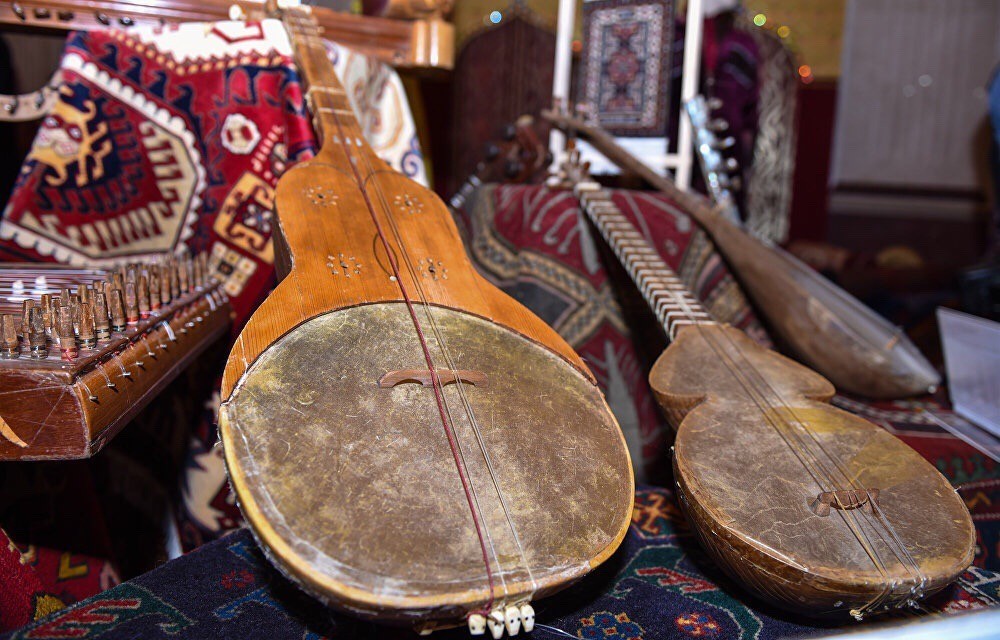The peoples of the ancient civilization that put forward great thinkers, philosophers, scientists and poets - Ibn Sina (Avicenna), Farabi, Navoi, Firdousi, Rudaki - were the creators of their musical folklore. Their musical instruments amazed with the variety of forms, richness and craftsmanship of finishing.
Despite the nomadic way of life of many peoples and difficult historical times, the inhabitants of Central Asia carried their national culture, manufacturing techniques, and performing skills on unique musical instruments through the centuries. There are about seventy-two varieties of instruments, each has its own character and figurative world. In their sound you can hear an unusual musical palette of melodies, timbres, rhythms.
Song and instrumental art, as well as the instruments themselves, were improved by folk musicians - Uzbek and Turkmen bagshi, Tajik hafiz, Kyrgyz akyns.
Let's get acquainted with some of the samples of musical instruments that exist in Central Asia, which are based on string, wind and percussion instruments.
In Uzbekistan, a diverse and rich instrumentation consists of: bowed strings - sato, gidjak; string-plucked - dutar, tanbur, oud, Afghan and Kashgar rubab; string-percussion - chang; wind - nay, surnay; percussion - doira.
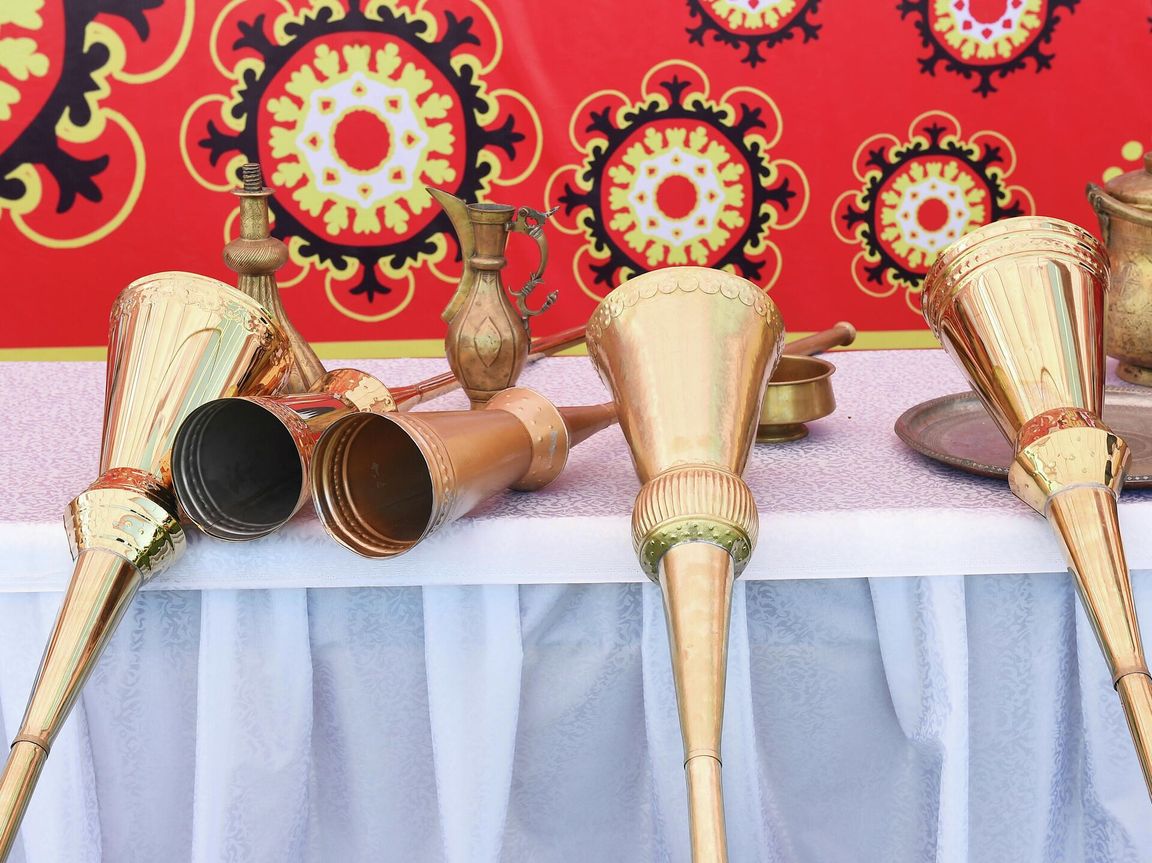
Photo: uz.sputniknews.ru
Karnay - in ancient times it was considered a tool for convening warriors and alerting the population about the approach of the enemy. In modern life, it is traditionally used at celebrations, weddings, symbolizing the holiday. This is a massive wind instrument, made of copper and brass alloys, the length of the pipe reaches up to 3 meters, it has a loud deep sound.
Nay - a transverse flute, made of reeds or brass, has 6 holes, melodic sound. The great Uzbek philosopher Jaloliddin Rumi said: “Listen to what melodies Nay talks about, Nay complains about partings…”
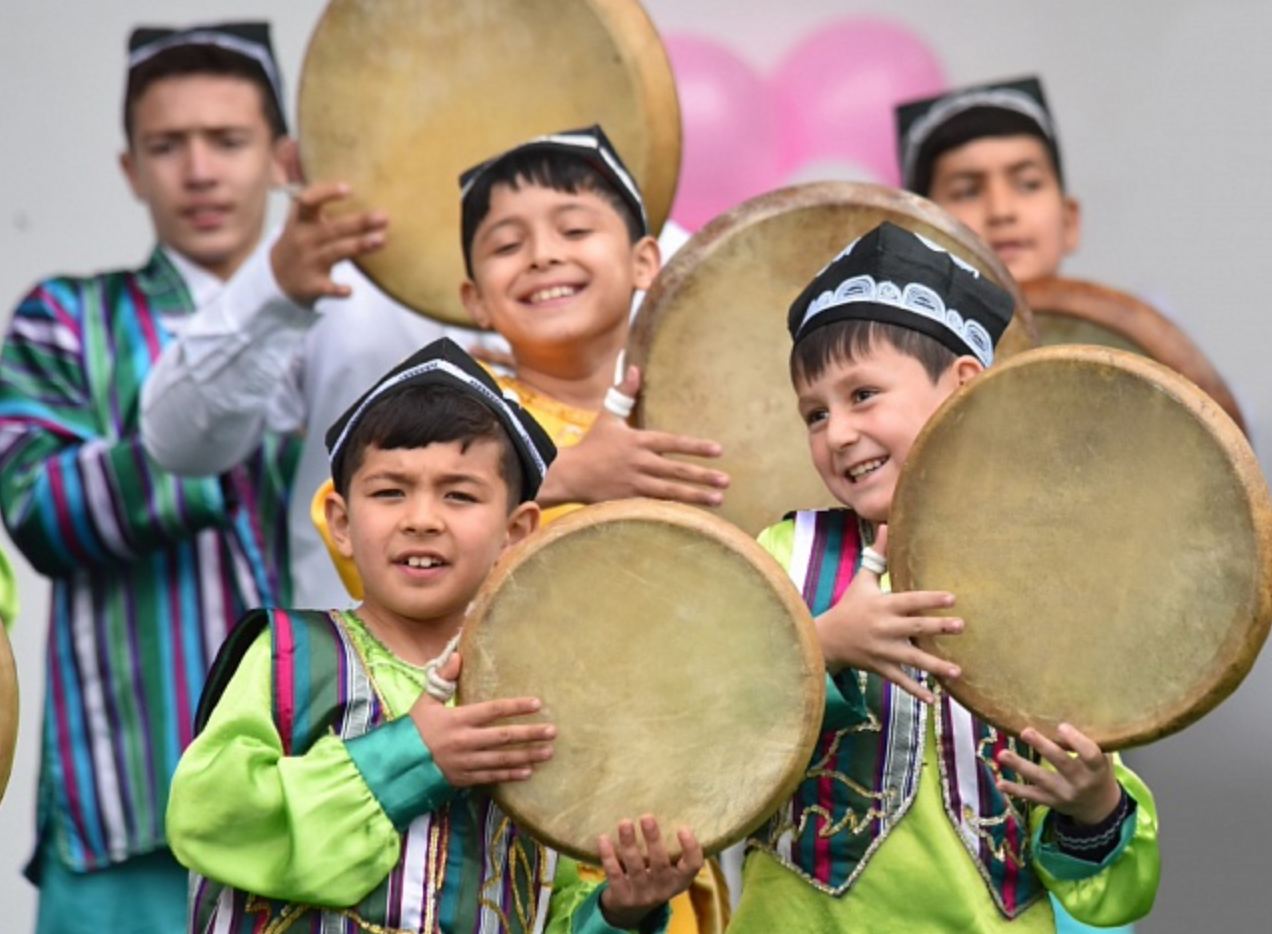
Photo: repost.uz
Doira - is a percussion instrument, similar to a tambourine, lined with leather material stretched over a wooden ring.
In Tajikistan, the most common stringed instruments are dutar, tanbur, rubab; wind instruments - kushnay, surnay; drums - nagora, tablak.
Photo: ok.ru
The rubab is a stringed instrument, made by hand from special types of wood, the process of cutting down a jug-shaped body is very painstaking. Only skilled craftsmen in Tajikistan know the secrets of soaking log cabins, stretching animal skin on the main part of the instrument, tuning strings and pegs. The sound of the rubab is lyrical, many dancing national Tajik melodies have an ancient history of existence.
Popular in Kyrgyzstan are: the two-stringed bowed instrument kyl-kyyak, in the manufacture of the soundboard of which camel skin is used; reed mouth instrument temir komuz (made of metal), jygach ooz komuz (made of wood); chopo-choor - folk wind instrument (made of white clay).
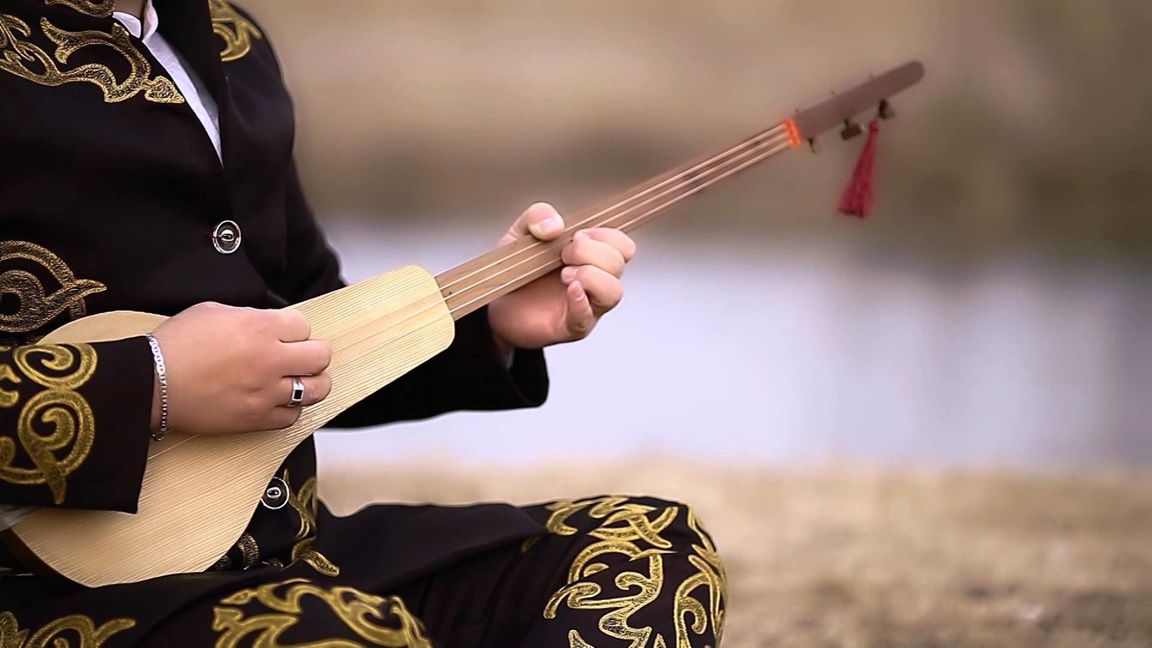
Photo: ktrk.kg
Komuz is a stringed plucked musical instrument with three strings and a sonorous melodic sound. The process of making a komuz mold is laborious. A blank from an apricot tree cut for a future instrument must dry thoroughly, so it is placed in a special dark room for several years. The neck of the komuz has no frets, and people learn to play it by ear, which is rather difficult.
One of the most common instruments that are widely used in the musical cultures of the peoples of Central Asia is the gidzhak (gydzhak, gizhak, gyjak). A bowed string instrument (often called an oriental violin), characteristic of Uzbeks, Tajiks, Karakalpaks, Uyghurs, Turkmens.
Its design is close to the Persian kemancha. The spherical shape of the body of the gyjak is made of a special variety of pumpkin, wood or other material, covered with leather on top. The modern gyjak has four metal strings, previously three-strings with silk strings were used. The instrument is held upright when classically played; a bright, slightly nasal sound is produced using a special bow-shaped bow.
Tuyduk (tüýdük) is widespread among Turkmen folk instruments, which, according to musicologists, is the ancestor of many wind instruments. Its ancient sample (more than 100 years old) is in the Museum of Musical Culture named after M. Glinka in Moscow.
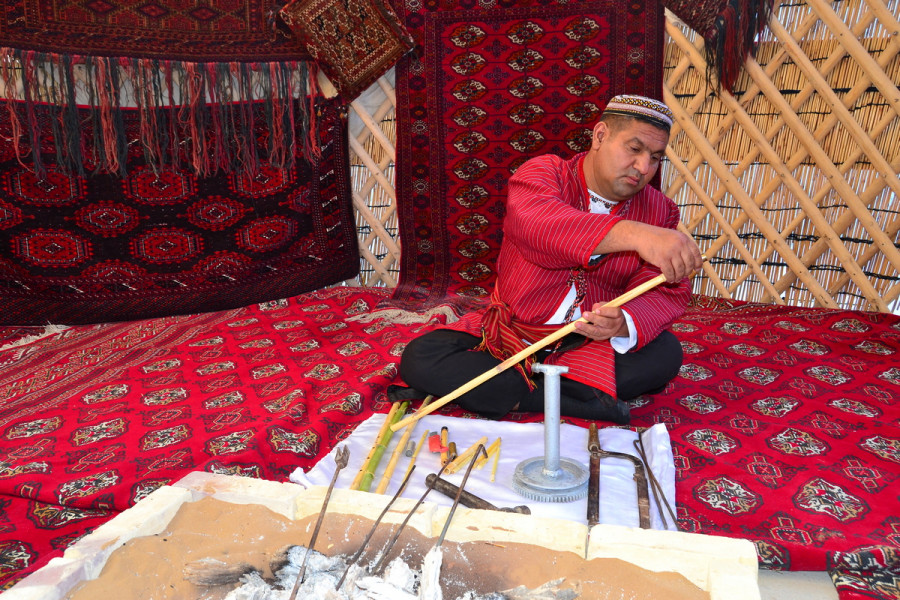
Tuyduk is made from a special kind of reed, has a length of 83 cm. The pipe is equipped with a metal mouthpiece in the upper part, has 6 holes (deshik), one of them (sheitan-deshik) is on the back side of the pipe. Varieties of tuyduk - dilli tüýdük, gargy tüýdük, goşa dilli tüýdük. Dilli tüýdük has a small size, common among shepherds (chopans). It is difficult to play the goşa dilli tüýdük, it is a paired instrument, where sounds are blown simultaneously from 2 pipes or alternately from each. It is currently out of use.

Dutar is an integral part of the national culture of the Turkmens and occupies the main place in the performing arts of professional folk singers, sazanda - bagshi. In the scientific work of scientists-researchers V. Uspensky, V. Belyaev “Turkmen music” an old legend is given ...
In ancient times, there lived an intelligent man named Eflatun (Plato). He liked to listen to the bird Kaknus (Phoenix), whose feathers made beautiful musical sounds when they flapped their wings.
Having studied the nature of these sounds, he made a dutar and composed beautiful music for it, reminiscent of the enchanting sounds of the cactus bird.
Translated from Farsi – “dutar” means – “du” - two, “tar” - a string. Its pear-shaped body is made of scorched, hollowed-out mulberry wood; the neck is narrow, convenient for girth with two fingers; the strings were previously made of raw silk, now they are made of metal. Standard size - length 87 cm, neck - 37 cm, body - 48.5 cm, tuning - in the interval of a quart.
Many terracotta statuettes (early centuries AD), among which there is a statuette of a “wandering bagshi”, were found during archaeological excavations in Merv. In the hands of a musician-rider is an instrument resembling a modern dutar. “A somewhat elongated, oval shape of the body and two strings are characteristic of the plucked instruments of the bagshi, inseparable companions of the steppe pastoralists”, writes art historian Tyatiana Vyzgo in her book “Musical Instruments of Central Asia”.
Today, the craft of making dutar and the performing musical art of bagshi are included in the UNESCO Representative List of the Intangible Cultural Heritage of Humanity.
Resources: sanat.orexca.com; thestrip.ru; centralasia-travel.com; volynki.ru; ru.m.wikipedia,org; uzbekistaninfo.ru; advantour.com.


